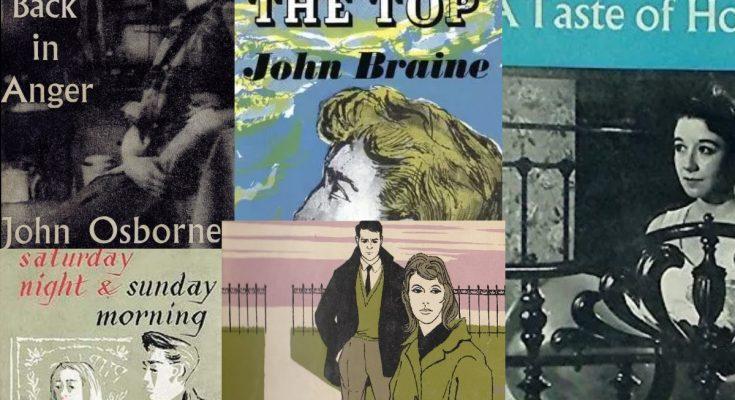Meaning Of The Term Kitchen Sink Realism
“Kitchen Sink Realism” is a phrase that describes a particular genre of British film and drama that became apparent in the late 1950s and early 1960s. It refers to a type of social realism that concentrates on the everyday lives of working-class people. Most often it refers to the mundane conditions they encounter within their existence. The term “kitchen sink” is symbolic, inferring that these works represent the ordinary and mainstream of people within society. Thus to the extents of including the minute details of domesticated life such as the kitchen sink.

Cover artist John Minton
Published by Eyre & Spottiswoode, 1957
The Key Features Of Kitchen Sink Realism
Criticism Of British Society :
One common theme which is evident of these works is that they question the halcyon middle-class image of post-war Britain. They focus on the frustrations and inequalities that working-class people face.
Realistic Portrayal Of Working-Class Environments :
Those familiar with the genre of “Kitchen Sink Realism”, will know that the atypical settings to the theme of the stories are set in working-class or lower-middle-class environments. Each story centres around the adversities of these individuals resulting in their harsh realities. Thus concluding in challenges the characters are then presented with. These include financial difficulties, conflict within their domestic situations and the constraints that society imposes upon them. Pivotal to these stories is how they individually try to overcome those adversities.
In addition this literature demonstrates the aspirations of those individuals within their social class. Examples of early works displaying this are settings or / and filming in predominantly working-class areas. For example “A Kind Of Loving” and “Room At The Top” in Yorkshire, “A Taste Of Honey” in Greater Manchester, “Saturday Night And Sunday Morning” in Nottingham and later works also set in working-class areas of London.
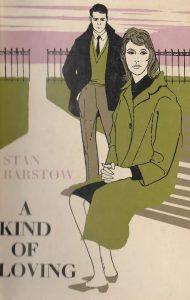
Published by Michael Joseph
Social Issues :
“Kitchen Sink Realism” very often addresses the constraints that individuals face as a consequence of their socioeconomic circumstances. Topics focusing on poverty, inequality, class conflict, unemployment, and the individual personal struggles of these characters. For example the central character, Joe Lampton in “Room At The Top” by John Braine (1957) who is ruthless in his ambition for upward social mobility.
Thus the backdrop to the themes of these works, provide an insight into the family and relationship dynamics of these individuals’ lives. They centre around their domestic situations. Depicted in “A Kind of Loving” by Stan Barstow (1960) where the central character Vic Brown is trapped by a loveless marriage due to an unplanned pregnancy. Jo in “A Taste of Honey” by Shelagh Delaney (1958) who also faces an unwanted pregnancy, has a mother who is selfish and “foot loose and fancy free” and abandons the responsibility of caring as a mother should. Additionally Jo’s friend Geoffrey in a “A Taste of Honey” who is a sweet, kind hearted and sensitive gay man, who displays empathy for Jo’s circumstances.
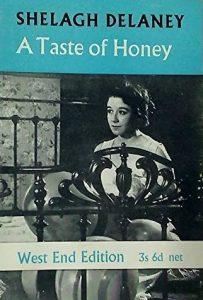
Paperback front cover, Methuen’s Modern Plays 1959
Authentic Dialogue :
The speech patterns of the working-class and the dialectal language reflects the accuracy of these works, displayed in the conversation by these individual. “Saturday Night and Sunday Morning” by Alan Sillitoe (1958) demonstrated by the rebellious central character of Arthur Seaton.
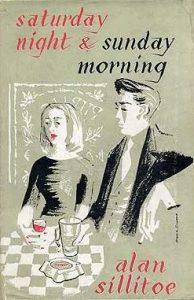
Cover artist Mona Moore
Published by W.H. Allen Ltd
Everyday Struggles :
“Kitchen Sink Realism” examines the routine struggles, and obstacles resulting from their struggles. Also additionally the aspirations of working-class people . An example of the central protagonist, university graduate Jimmy Porter in “Look Back in Anger” by John Osborne (1956).
The works of these playwrights and authors aimed to outline a broad range of social and transitional changes that were to proceed after World War II in Britain. Thus displaying an introspective desire to bring the concerns of the working-class into the limelight by artistic interpretation.
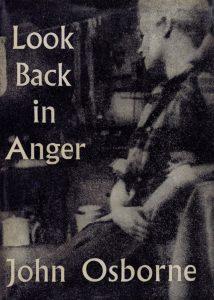
Published by Faber and Faber, 1957
Protagonists That Display Rebellion :
The central characters within each story, often rebel against societal expectations and norms, due to them feeling trapped by their circumstances.
The Origin Of The Term “Kitchen Sink Drama”
Kenneth Tynan the English theatre critic and writer, used the phrase to describe John Osborne’s play “Look Back in Anger” in the Observer in 1956. He championed the play which is considered to be fundamental in the works that were to follow by the Angry Young Men movement of the late 1950s and early 1960s. Kenneth Tynan observed that the play included not only the important events of everyday life, but additionally it included the more trivial aspects on stage, as the kitchen sink.
© 2024 – 2025, Jayne Thomas. All rights reserved.
Follow me :
